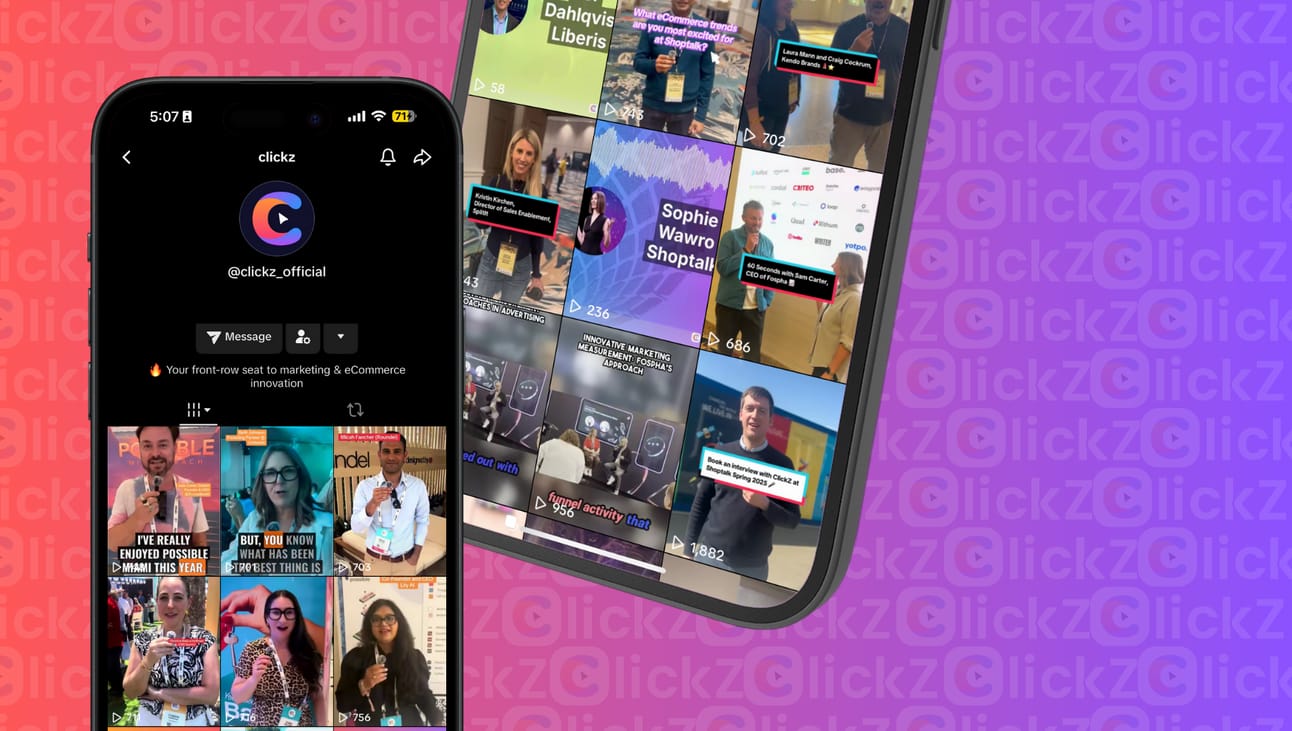“Do you actually understand the problem? Can you articulate it in its simplest form?”
This was the provocation offered to a packed room of marketers at MAD//Fest 2025, and it set the tone for one of the most grounded, honest leadership conversations of the event.
The session titled “Why Are We Here? The Role of Senior Leaders in Marketing Transformation” featured a panel that pulled no punches. Gill Huber of Ingenuity+ hosted a panel of marketing leaders who’ve driven change across some of the world’s biggest brands, including Dipesh Patel (Chief Digital Officer, Unilever Beauty & Wellbeing), Mays Elansari (former Marketing Director, Subway), and Tanya Weller (Marketing Director, Samsung Electronics UK).
While the agenda promised transformation strategy, what emerged was something more essential: a conversation about trust, translation, and what really separates marketing leaders who shift culture from those who just shuffle teams.
The Real Work: From Vision to Fluency
Too often, transformation gets confused with vision statements, decks, and new KPIs. But as Tanya Weller pointed out, none of it sticks unless leaders learn how to speak the language of the business. That means knowing how to explain the “why” behind marketing decisions to people who think in margin, not media. “You might say something three or four times in a presentation,” Weller noted, “but it only lands when you understand what the CFO, or the board, is really listening for.”
It’s not enough to be persuasive. Senior marketers have to be multilingual in the corporate sense: fluent in finance, operational goals, and commercial levers. That fluency isn’t about dumbing down, it’s about building bridges. The panel agreed: too many marketers see internal alignment as a box to tick, rather than a core part of the transformation brief.
Marketing Is Still Misunderstood And That’s Our Problem
For Mays Elansari, the challenge became painfully clear in her time at Subway: operations and marketing were functionally misaligned and sometimes emotionally disconnected. Ops saw marketing as a cost center, or worse, a distraction.
Rather than defend her team, Elansari went in with curiosity. “We spent time asking: what are their barriers? Why don’t they see our value? What would actually help them do their jobs better?”
The insight was deceptively simple: marketing wasn’t embedded. It was adjacent. And until that changed, the transformation would always stall.
What followed was a deliberate effort to break silos, ask better questions, and collaborate from a place of shared outcomes. As she put it, “The mindset shift was about how we ask questions. Less proving. More understanding.”
That approach reflects a larger theme emerging across top marketing orgs: if internal teams don’t trust marketing, that’s not a ‘them’ problem. It’s a leadership gap. And the best leaders don’t just fix campaigns, they repair relationships.
Ask ‘Why’ Until It Hurts
Too often, transformation starts with a solution. A new tool. A new structure. A new initiative. But as Tanya Weller reminded the room, that instinct can short-circuit clarity. “Before you jump into solutioning, do you actually understand the problem? Can you explain it back to yourself? To your team? To finance?”
Her recommendation? Keep asking “why” until the answer is sharp, simple, and indisputable. That’s the discipline too few transformation teams adopt, especially in large enterprises where execution speed is prized above shared understanding.
Dipesh Patel echoed the same sentiment from a global Unilever lens. He challenged leaders to make this approach part of the onboarding process, especially in highly matrixed businesses.
“Your first 30 days shouldn't be about delivery,” he said. “They should be about listening. Get out of the office. Meet people. Ask stupid questions.”
It’s not inefficiency, it’s the foundation of alignment.
Internal Alignment Is a Strategic Capability
One of the strongest threads throughout the session was this: the best marketers don’t just lead campaigns. They lead inside the business.
That means knowing who’s on your side, who’s not, and how to influence without command-and-control levers. It’s human, not hierarchical.
Dipesh spoke about encouraging his team to ask internal stakeholders, “How can I help you?”, not because they’re being deferential, but because that mindset unlocks reciprocity. “Do a favor now,” he said, “because you’re going to need one later.”
In other words: transformation is a team sport. But that only works when marketing builds credibility through shared wins, not isolated launches.
Culture Eats Marketing Plans, Too
The session closed with a quiet but powerful truth: marketers can’t transform businesses if they don’t understand the culture they’re transforming within.
Whether it’s an operations team in a franchise-led food chain or a finance org in a product-led company, every department has its own language, values, and friction points. Leaders who succeed in transformation aren’t just good at vision, they’re good at reading the room.
As Dipesh put it, “Sometimes, it really is just about the human stuff. Say hi. Ask a question. Be generous. That’s how the doors open.”
And those doors, once open, are where real transformation walks through.
Key Takeaways
Fluency in finance is non-negotiable.
Senior marketers must be able to frame decisions in commercial terms, especially for CFOs and boards.Internal alignment isn’t soft, it’s strategic.
Building trust with ops, finance, and cross-functional teams is part of the marketing job, not a distraction from it.Ask ‘why’ until the problem becomes obvious.
Jumping to solutions too early leads to shallow transformation. Clarity comes from disciplined curiosity.Relationship equity matters.
Spend time listening and offering help before you ask for buy-in. Human connection is the oil in the transformation engine.Transformation starts inside.
If your own teams don’t trust or understand marketing, no external change will stick.
Bottom Line:
Marketing transformation isn’t just a matter of strategy, structure, or storytelling. It’s about leadership that listens, relationships that outlast org charts, and the courage to keep asking the simplest question of all:
Why are we here?
💡 Don’t Forget…
Add us to contacts
→ [email protected] (so we don’t land in spam during the show)
Follow us live

That’s your 24-hour head start.
Keep this guide handy, make your picks, and book your meetings early — the most valuable conversations won’t wait. See you in Shoreditch.
— The Unofficially MAD//Fest Team

Unofficially MAD//Fest is a ClickZ Media publication in the Events division

